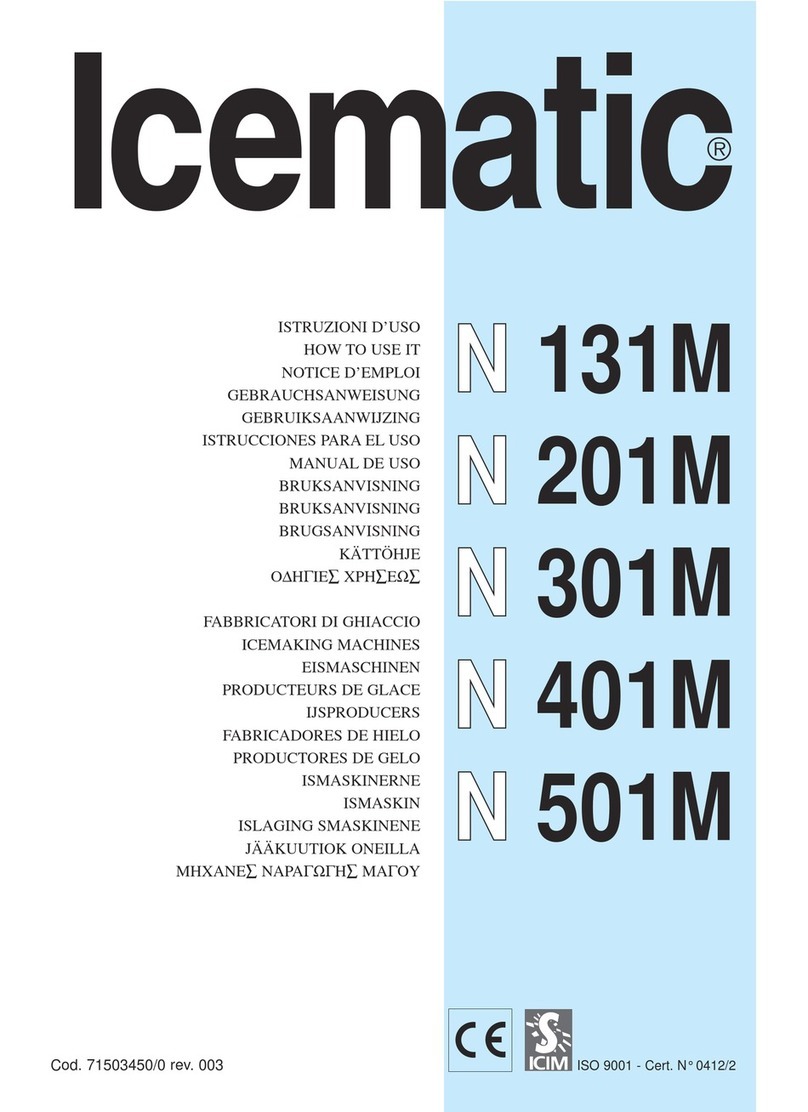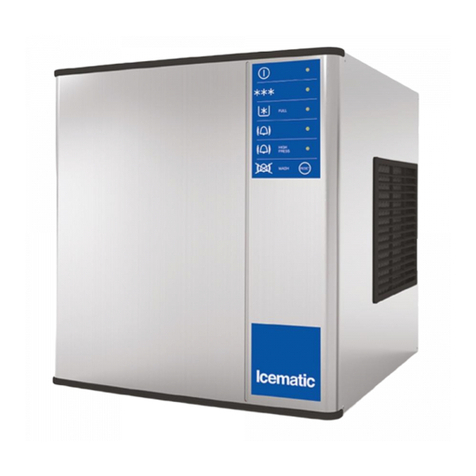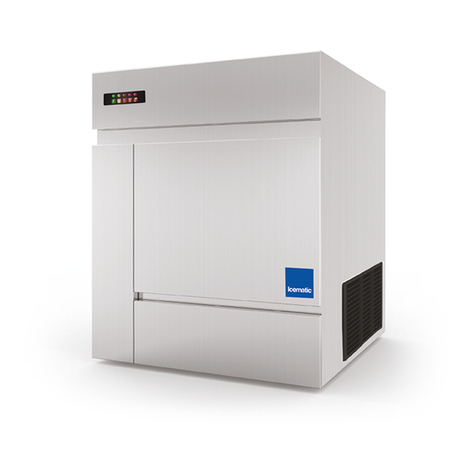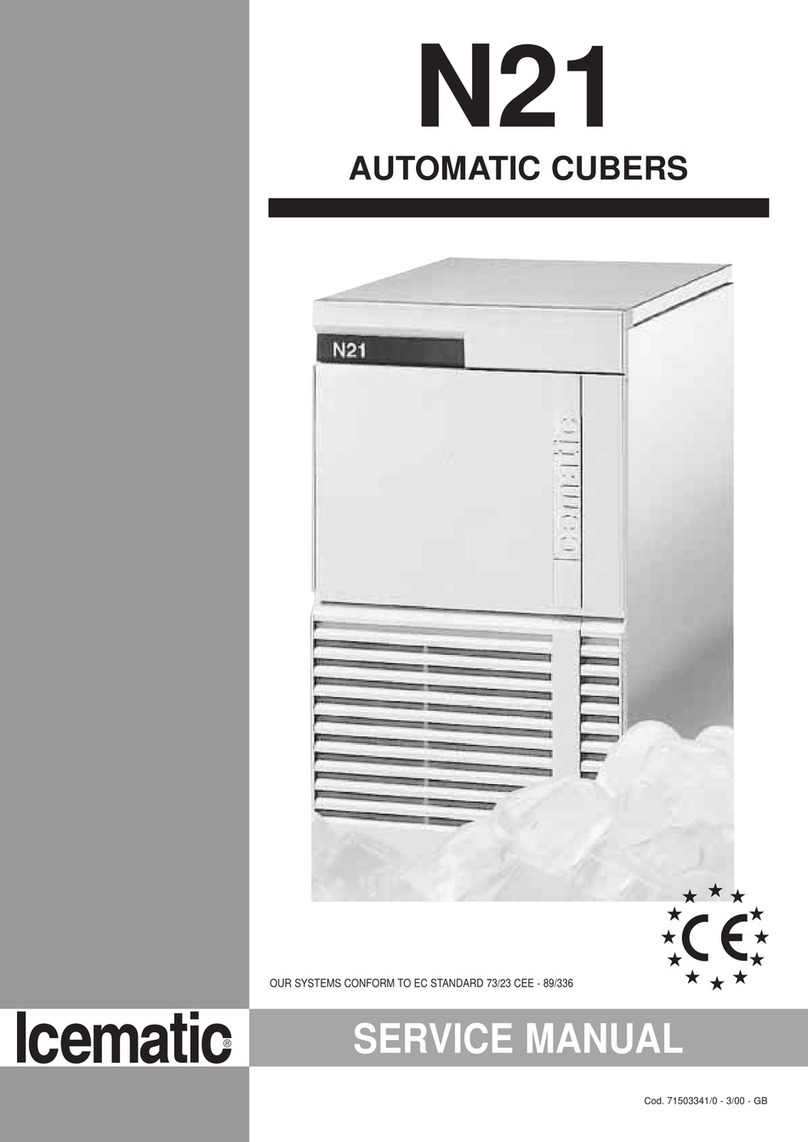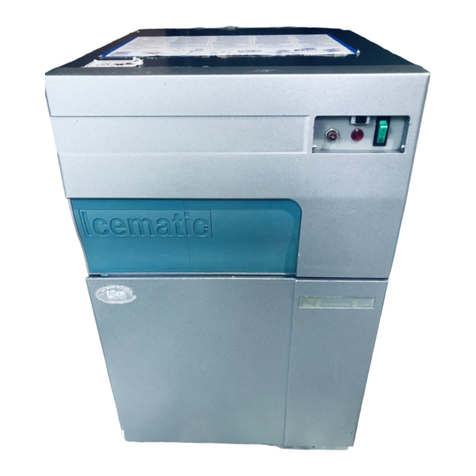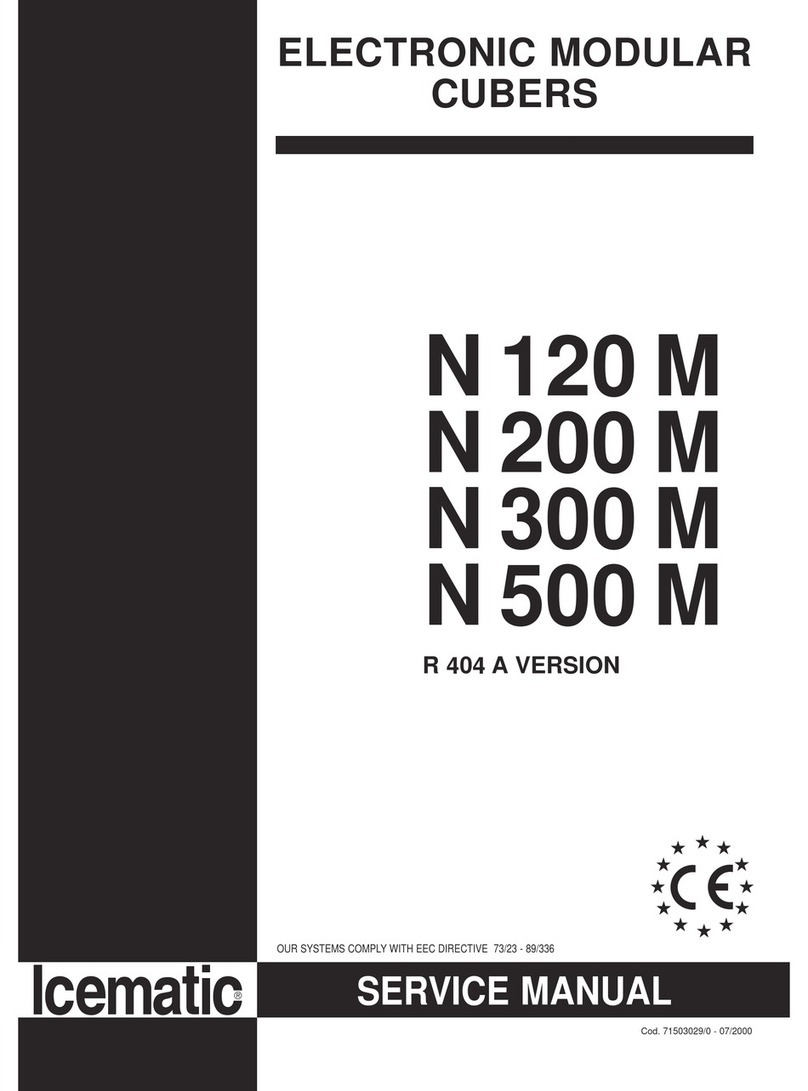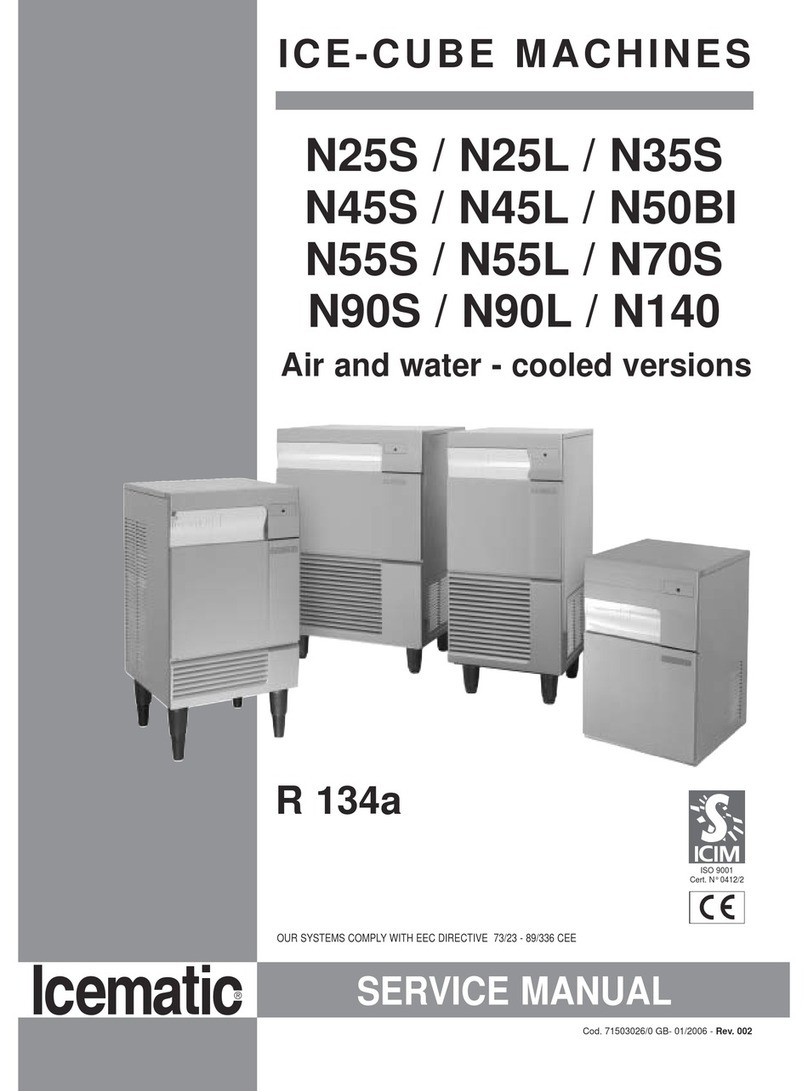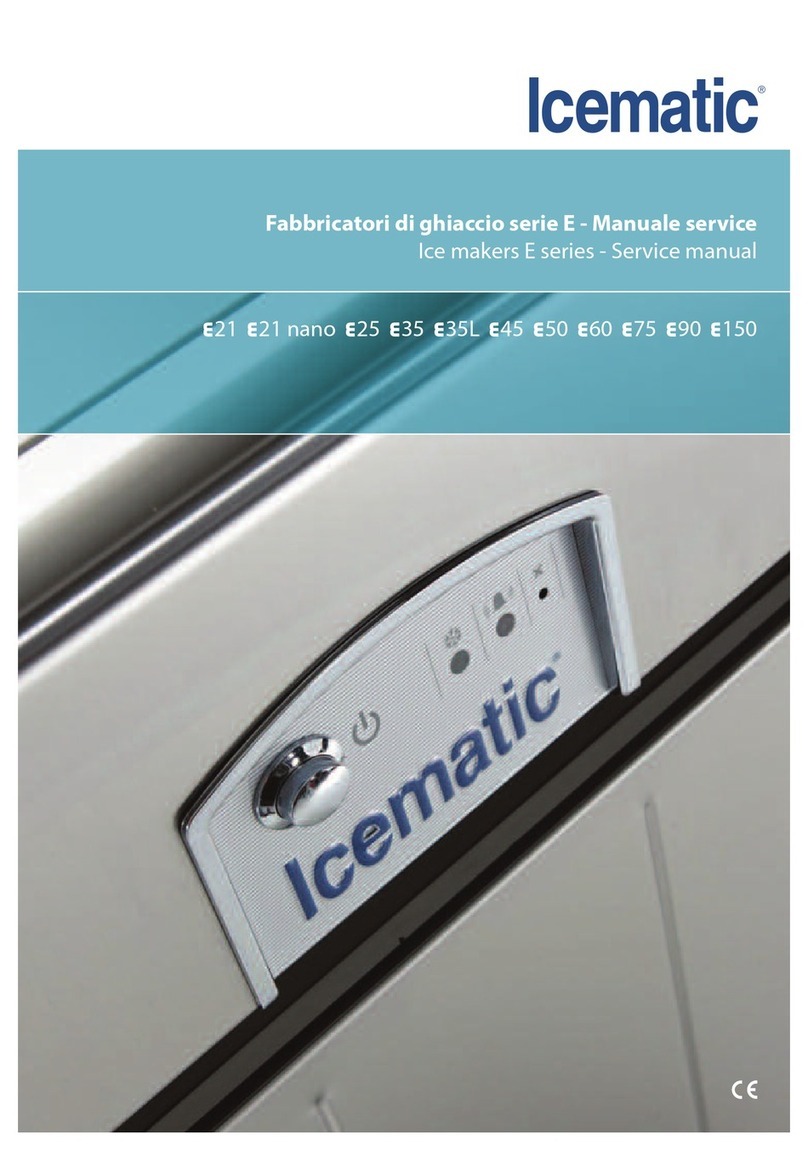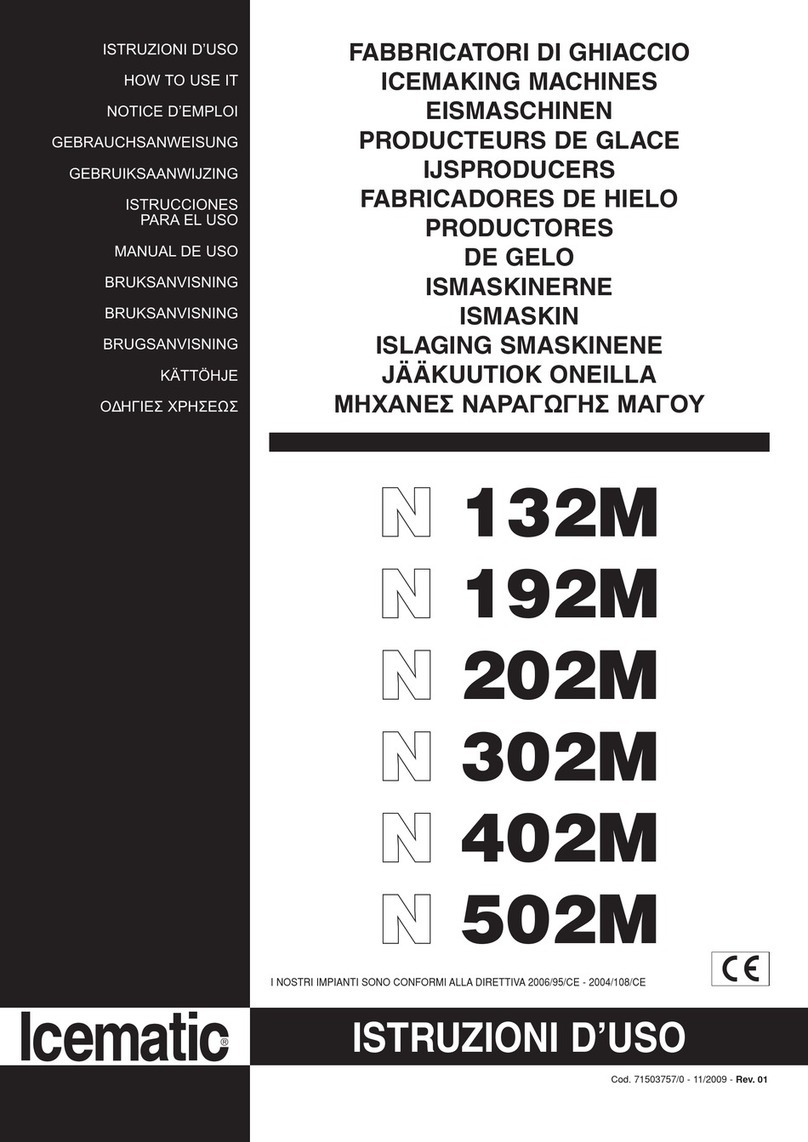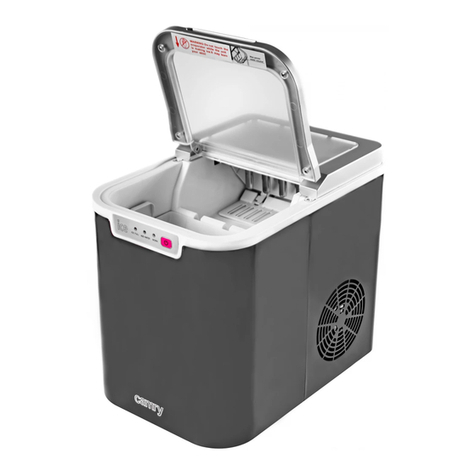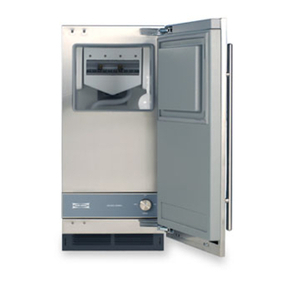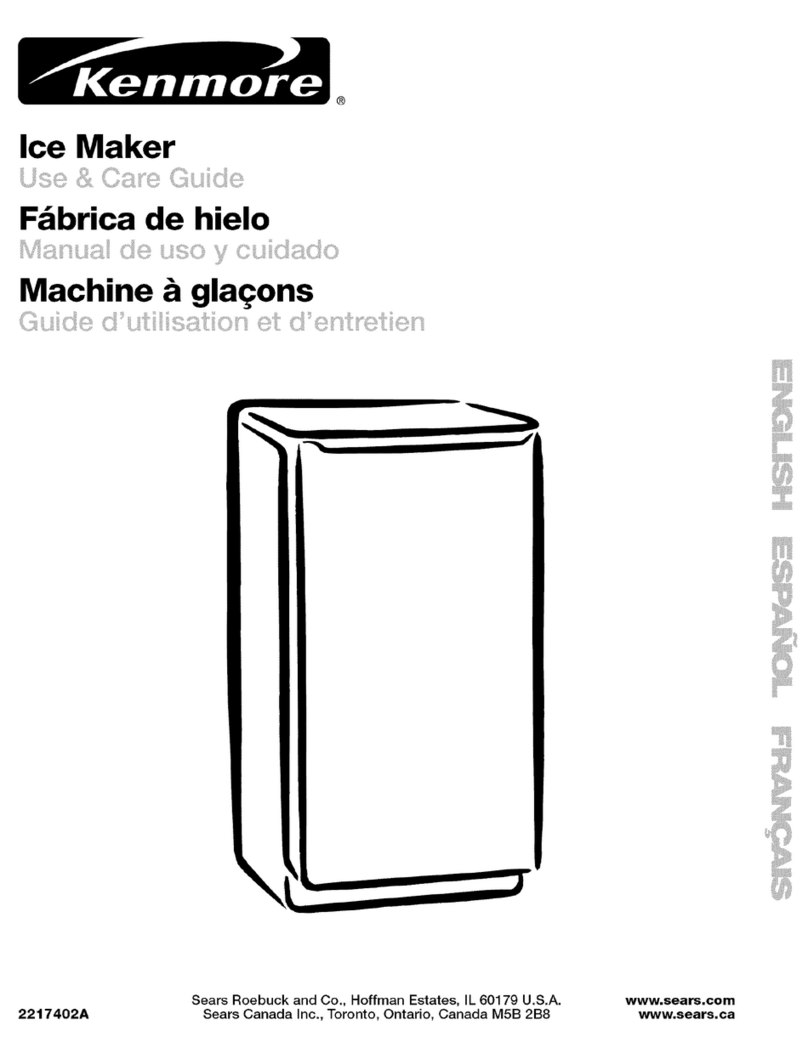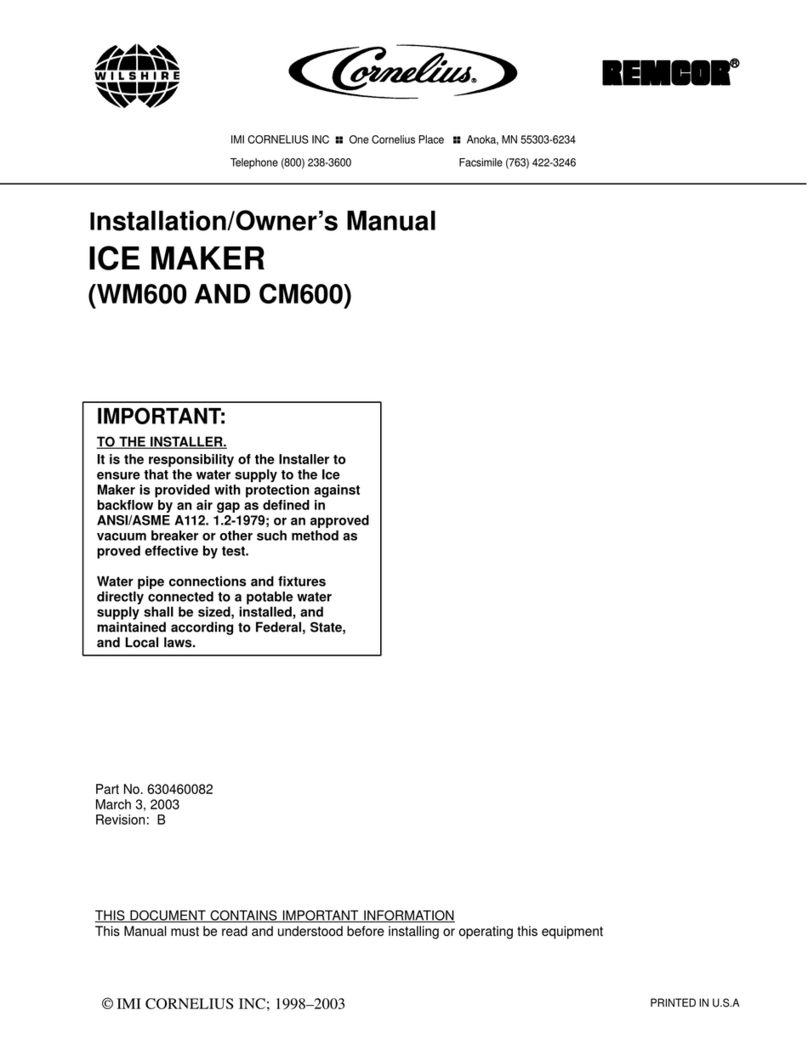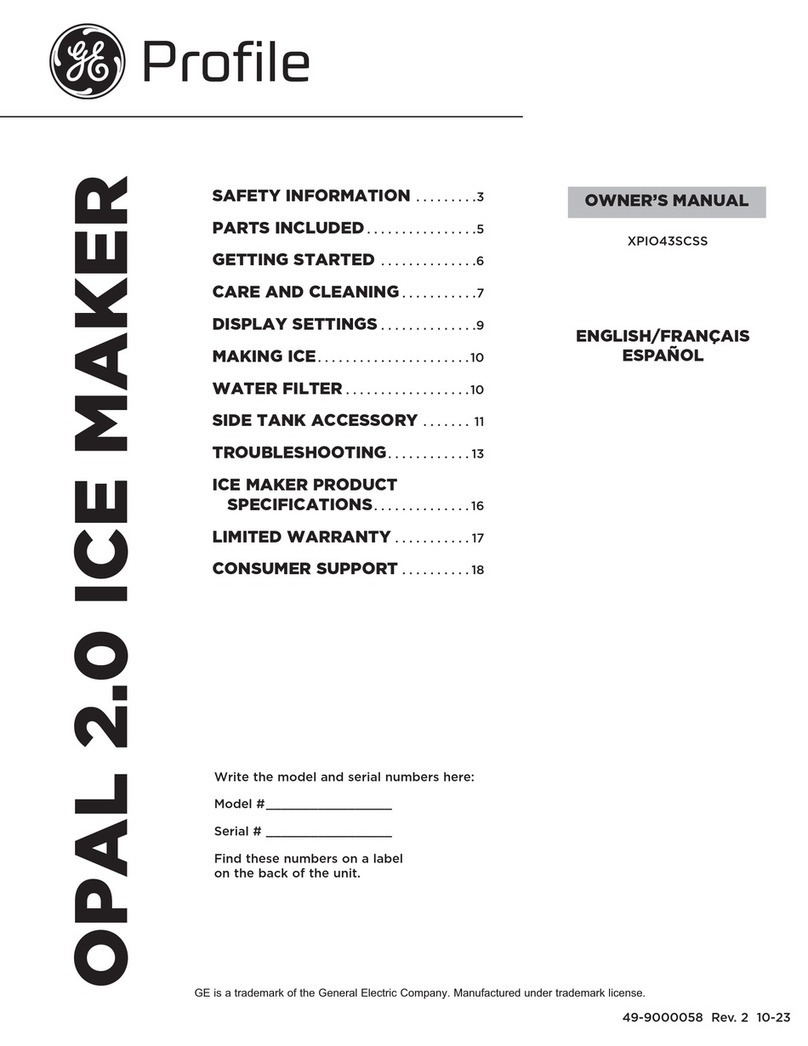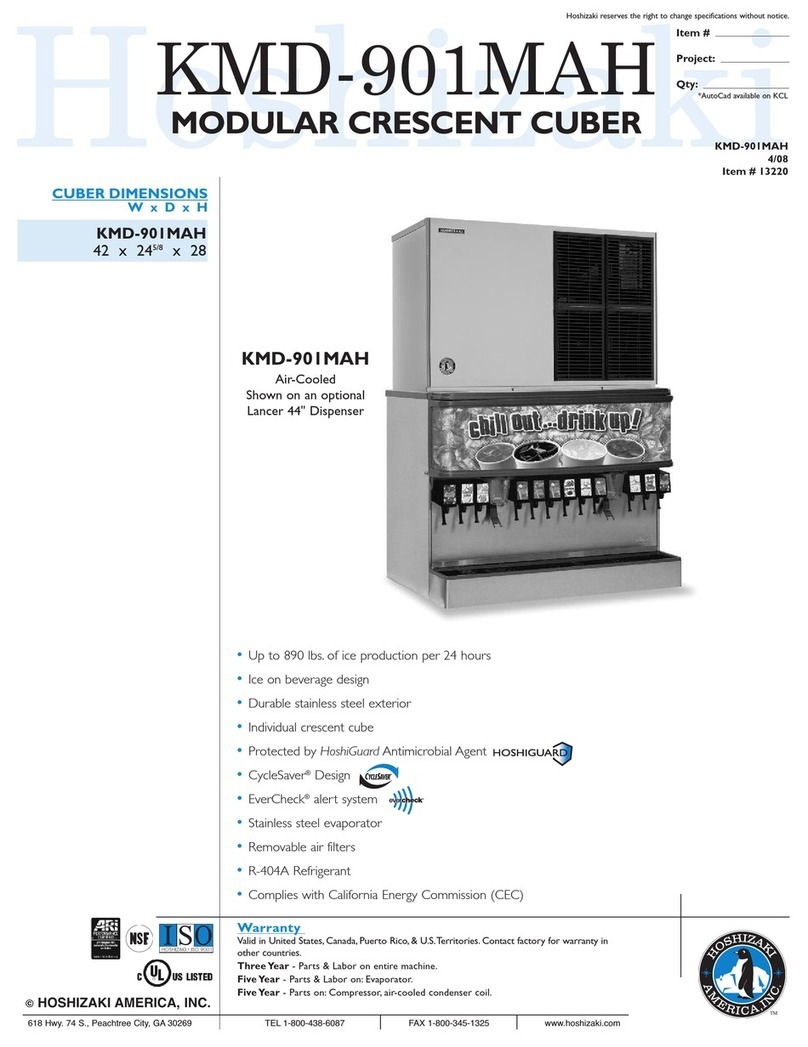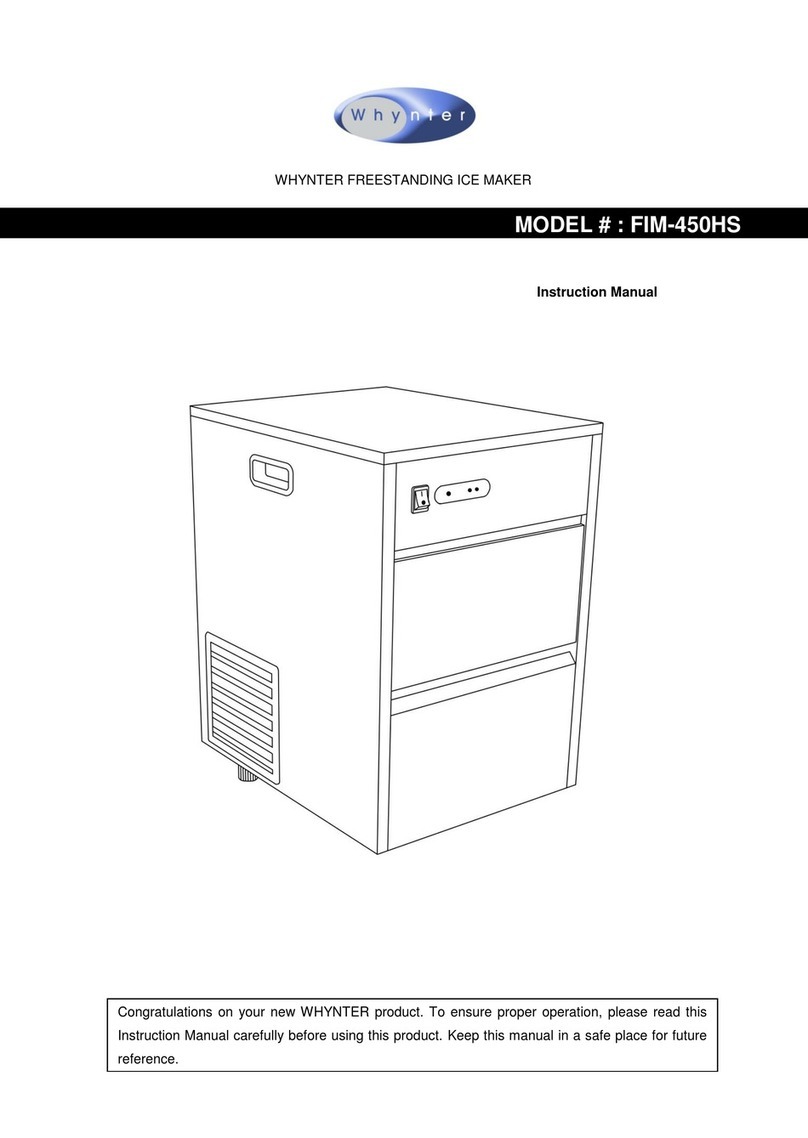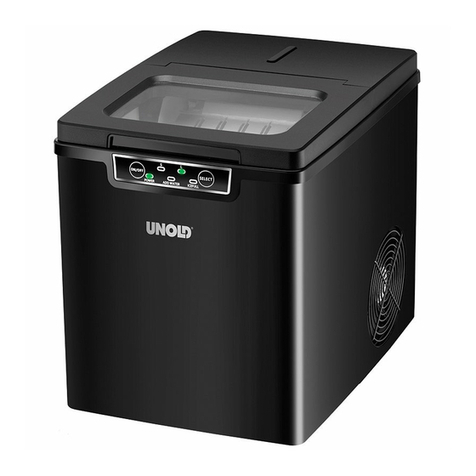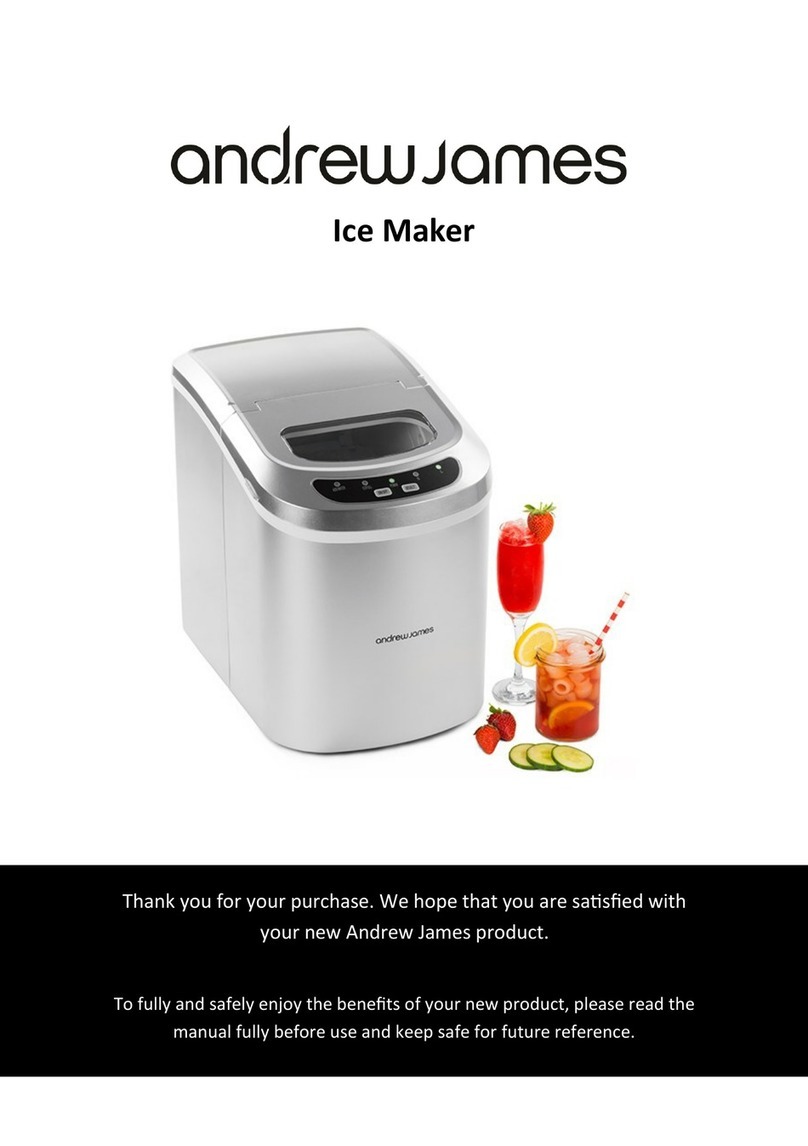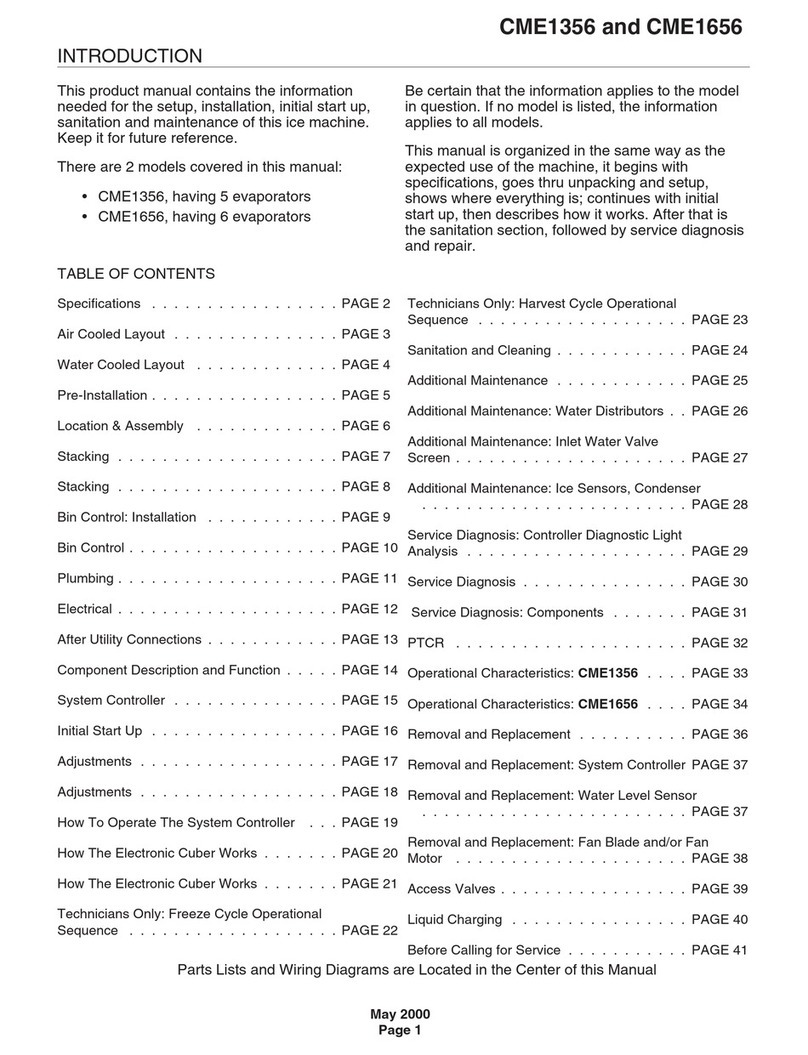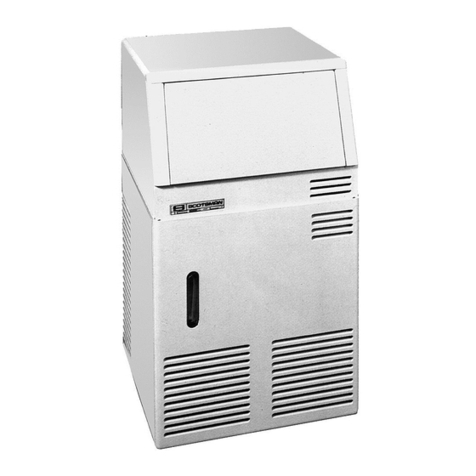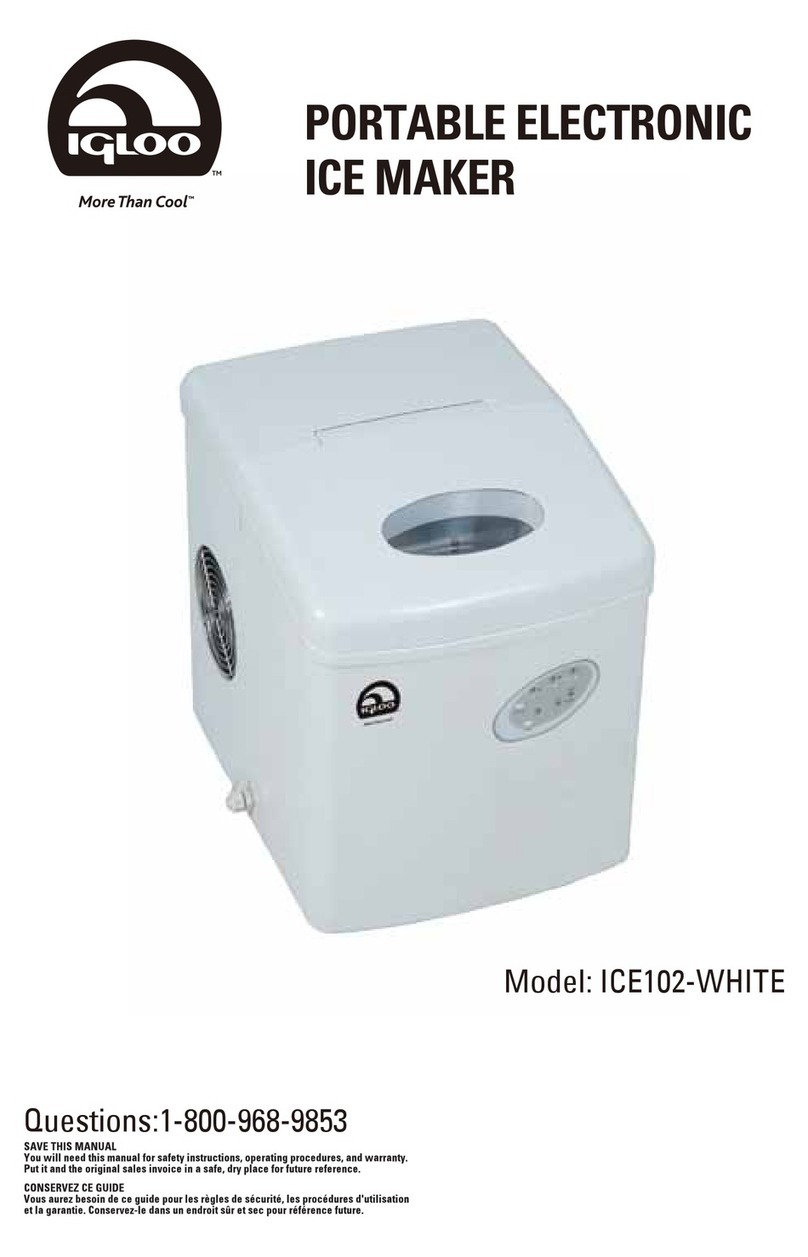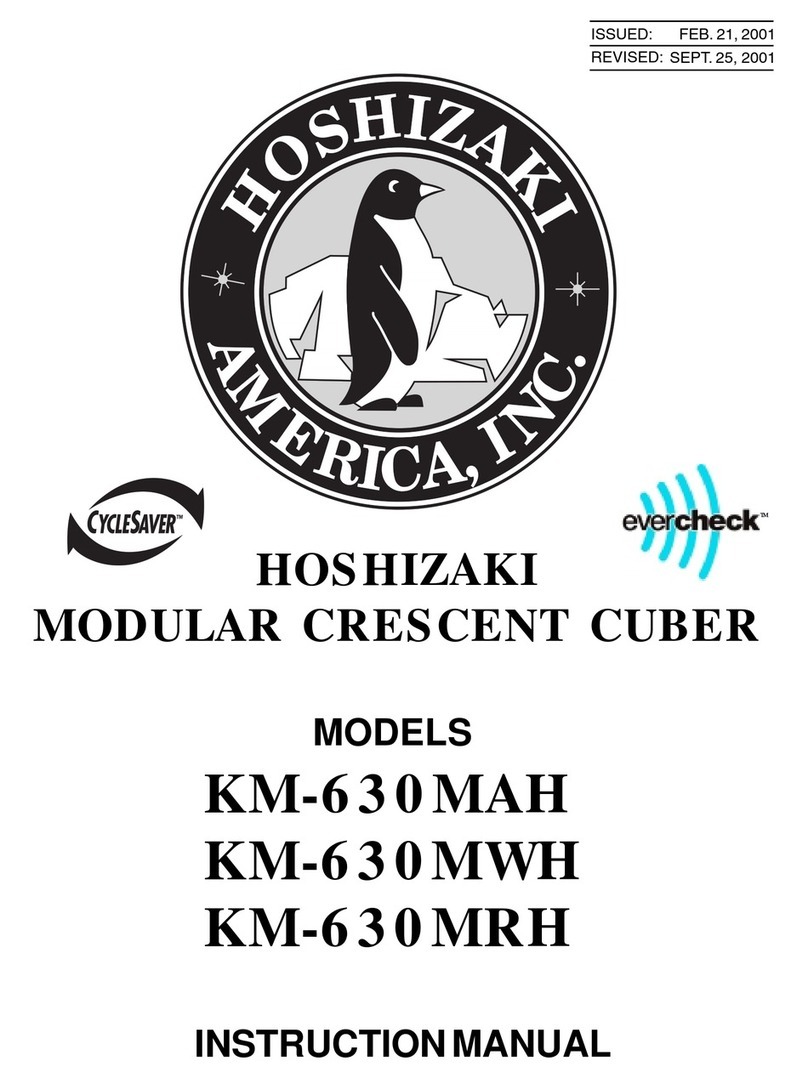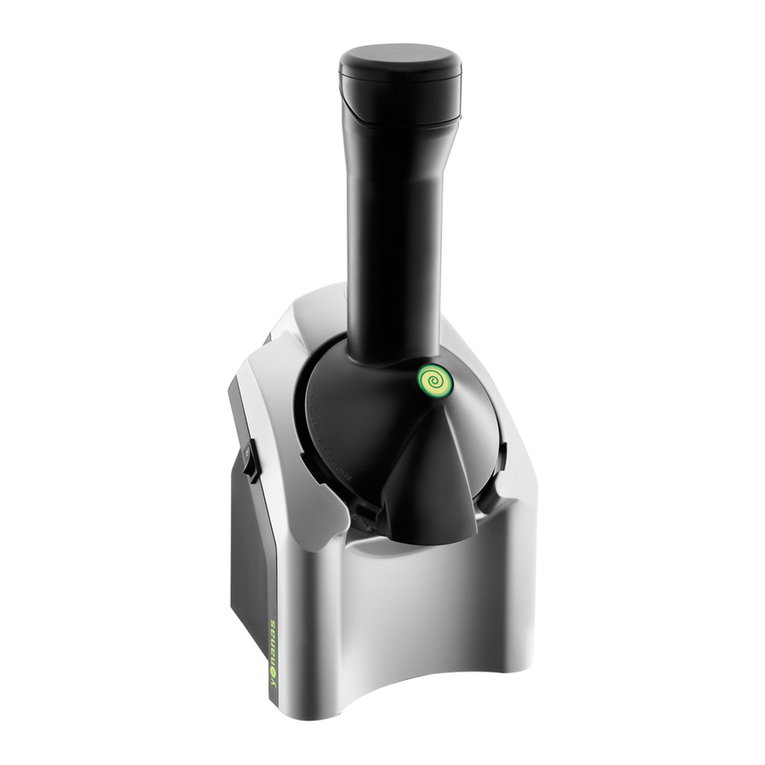
NOTE.
The length of the defrost cycle (not
adjustable)is automaticallydeterminatedby
themicroprocessorofP.C.BOARDinrelation
of the time T2 necessary for the unit to
reducetheevaporatortemperaturefrom0
°
C
(32
°
F)to-16
°
C(3
°
F)asillustratedinTableB
of PRINCIPLE OF OPERATION.
As shown it is possible to have a different
lengthofthe defrostcyclein connectionwith
the different length of the second phase of
the freezing cycle T2 related to the ambient
temperature situations; shorter when the
ambient temperature is high and longer in
colder ambients so to partially compensate
the length of the freezing cycle, which is
longer in high ambient temperatures and
shorter in low ones.
J. Check, during the defrost cycle, that the
incoming water flows correctly into the sump
reservoir in order to refill it and that its surplus
overflows through the overflow drain tube.
K. Checkthetextureoficecubesjustreleased.
They have to be in the right shape with a small
depression of about 5-6 mm in their crown.
Ifnot,waitforthe completionofthe secondcycle
before performing any adjustment.
If the ice cubes require a correction of their
shape, it is possible to modify the length of the
timedfreezingcyclebychangingtheDIPSWITCH
keys setting as illustrated on table C shown in
OPERATING PRINCIPLE.
If the ice cubes are shallow and cloudy, it is
possible that the ice maker runs short of water
during the freezing cycle second phase or, the
quality of the supplied water requires the use of
an appropriate water filter or conditioner.
L. To be sure of the correct operation of ice
leveltemperaturesensorlocatedinonesideof
storagebinliner,placeduringthodefrostcycle
one shovel of ice cubes in contact with its
probe.
As the temperature of storage
bin sensor reaches the value
of +2°C (35°F), the ice level
control transmits a signal to
themicroprocessoroftheP.C.
BOARDinorderto stopthe ice
makeroperationjustattheend
of the defrost cycle with the
simul-taneous glowing of the
3rd RED LIGHT, to monitor
theBINFULLsituation(Fig.5).
Withnomoreice cubesintouch
withtheicelevelcontrolthetem-
perature of its probe
progressively rises to reach
+4.5°C (40°F) and at this point the ice machine
restarts to initiate a new freezing cycle with the
simultaneous extinguishing of the 3rd RED
LIGHT.
H. The unit remains however in its normal
freezingcyclemodeuntilltheevaporatortempe-
rature detected by the sensor reaches the tem-
perature of -16°C (3°F).
When the evaporator tempera-
turefallsbelowtheabovevalue,
the evaporator temperature
sensor supplies a low voltage
powersignaltotheP.C.BOARD
inordertoactivatetheelectronic
timer.
This one takes over the
controlofthefreezingcycleupto
thecompleteformationoftheice
cubes(Fig.4) withthe lightingup
of the 4th RED LED located just
above the previous lighted one.
NOTE.
Thelengthoftheentirefreezingcycle
is the sum of the lengths of three phases,
two of which, (T1+T2) controlled by the
evaporatortemperaturesensor,whichhas
itsprobeplacedincontactwiththeevaporator
serpentine (Non adjustable), and one (Ta)
by the electronic timer (Adjustable)
incorporated in the P.C.BOARD.
Thelengthsofthefirsttwophases,relatedto
the evaporator temperature and controlled
by its sensor, are:
T1 -The timeelapsed sincethe beginningof
freezing cycle up to when the evaporator
reaches the temperature of 0
°
C (32¯F).
T2 - The time required for the evaporator to
fall from 0
°
C (32
°
F) to -16
°
C (3
°
F).
Thethird timeTa -Time added-isin relation
tooneofthedifferentcombinationsofthefive
keys 3, 4, 5, 6 AND 7 of the DIP SWITCH
located in the front of the P.C.BOARD.
Thecombinationisfactorysetinconsideration
of the ice maker type and of its cooling
version. It is possible, however, to vary the
timedlengthofthefreezingcycle,bychanging
the DIP SWITCH keys settings.
In Table C of PRINCIPLE OF OPERATION
areshownthevarioustimeextensionsofthe
freezingcyclethirdphase Ta,inrelationwith
the different DIP SWITCH keys settings.
I. After about 20-22 minutes from the
beginning of the freezing cycle, in an
hypothetic ambient temperature of 21°C
(70°F), the defrost cycle takes place with
the hot gas and the water inlet valves being
simoultaneously activated.
The electrical components in operation in this
new situation are:
COMPRESSOR
WATER INLET SOLENOID VALVE
HOT GAS VALVE
WATER DRAIN VALVE
and
WATER PUMP for the first 15 seconds.
FIG. 4
FIG. 5
Page 8
